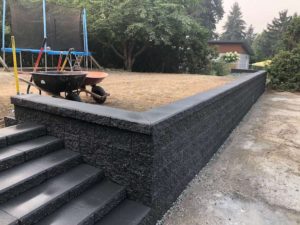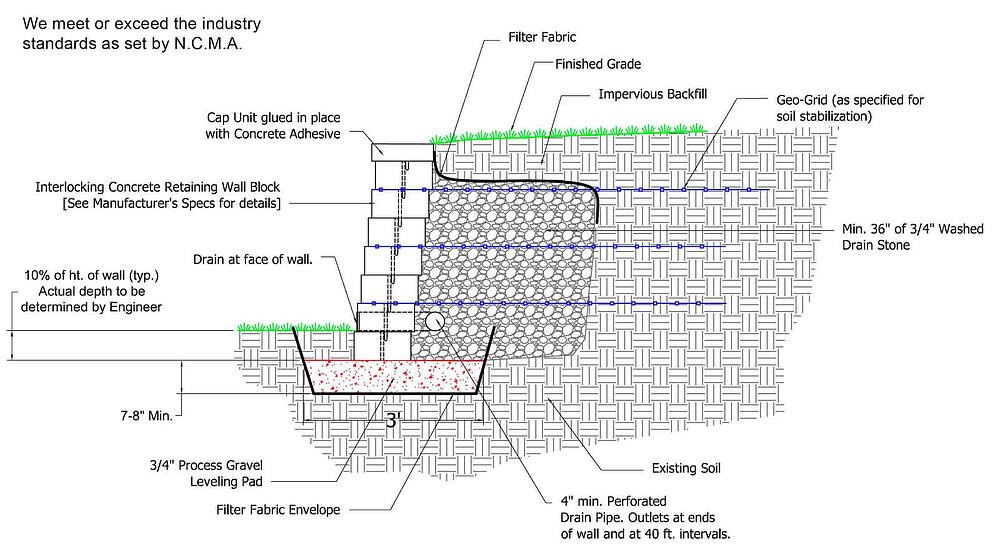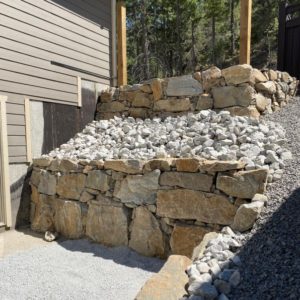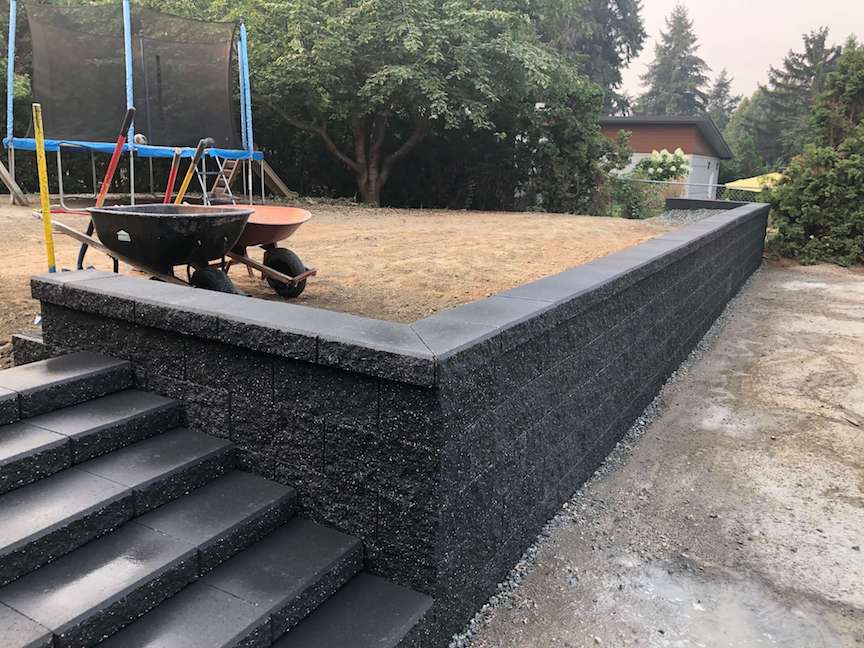Retaining walls are found around many homes, businesses and schools. But chances are, you’ve never really noticed them. Though they may be beautiful additions to a property, they serve a fundamental purpose: expanding your usable outdoor living space.
A properly-built retaining wall provides extra support for the extra architectural items on your own property like your driveway, shed or patio, by avoiding the land beneath them from sliding downhill. From the physics perspective, the wall battles the gravitational force of a mountain, ensuring that the soil beneath these additions is stable.
Retaining walls provide additional benefits as well. By turning what was once a graded hill into a level, you’ll slow water runoff from your house and protect your yard from flooding in heavy rainfall. In place of running straight down a mountain, the flat area breaks the momentum of the running water.
Retaining walls provide more usable space around your property, turning what was functionally difficult to use into a flat, friendly surface. With that space, you could create a garden, patio, or walkway. Or you could simply open up more of your yard for easy walking, playing or resting.
Unsure if you will need a retaining wall or want to higher know how they’re built? This information will address these topics and explain what considerations are important when you begin building.
When do You Need a Retaining Wall?

There are several scenarios which may demand building a retaining wall in Kelowna. Let’s start at the the surface of the hill. As soon as your home sits at the very top of a mountain, you won’t need certainly to be concerned about flooding, but you might not have much room for gardening or entertaining. In the event that you build several short retaining walls, you can cause a couple of “steps” or terraces on your own land to help you maximize the usable flat space on your own property. And once we alluded to above, you might also raise a patio with a retaining wall on the edge.
Now, if your house sits at the bottom of a mountain, it’s smart to guard against the real threat of flooding. Even if you live close to a decent-sized hill, a retaining wall (along with other drainage solutions and structures) will help protect your house from harmful flooding and the danger of erosion. Without the wall, erosion of the hill’s soil can cause a great deal of injury to your property over time.
Perhaps you have a walk-out basement or want to build a pool. Homes with the former require retaining walls to guard the entrance to the walkout basement. The exact same relates to a garage entrance that may be underneath the house. If you plan to install a swimming, you’ll need to ensure the land you build it on is perfectly level. In many cases, it’s tough to discover a large-enough and flat-enough space to support an in-ground pool without needing to level the soil. A retaining wall ensures your land is perfectly level and suited to a pool.
How a Retaining Wall is Built
To be able to create a flat working surface out of a mountain, a contractor needs to install a compacted base material underneath the wall to provide a level surface to build upon. Here is the the red material shown in the figure below, which sits underneath the first row of wall block.
Next comes the building of the retaining wall itself. To be able to construct a retaining wall that may last decades, at the least 10% of the height of the wall should really be buried beneath ground. As shown in the figure, the initial block sits beneath the surface.
To be able to prevent erosion and protect the wall, drainage stone should really be installed at the least three-feet behind the wall. That is shown in the square-like section behind to the right of the retaining wall and below the plateau. It’s critical that the excavated slope is as stable as you are able to, which ensures the longevity of the build. The backfill should be compacted with the proper wall materials to keep your property safe and looking beautiful for many years to come.

The Different Types of Retaining Walls and Materials Used
Both common types of retaining walls are gravity and engineered walls. Gravity walls work utilizing the weight of a block or stone material to put on the wall together and retain the soil. Engineered walls stabilize soil with Geogrid – a geosynthetic material that’s designed to strengthen soils and keep back the slope of a hill. The outside of an engineered wall is typically finished with a veneer (usually concrete wall block made to accomplish the job) to provide a beautiful face to the underlying construction..
From natural stone to concrete, several different materials may be used to produce different looking and functioning retaining walls.

- Segmental retaining wall blocks are processed having an interlocking system to put on a wall together and fortify its structure.
- Natural stone is typically right for smaller walls and give a natural look. They are some of the very most gorgeous stones.
- Wood timbers and railroad ties provide a natural aesthetic that’s best used to build smaller walls – keeping in mind that wood does not need the longevity of stone and will rot with time.
Many of these materials in many cases are useful for a dual purpose – if the the retaining wall is made at sitting height it could double as a bench.
- Gabion– wire baskets with stone inside – certainly are a great selection for homes in areas that get a lot of rainfall. This materials drains water very efficiently.
- Lastly, poured-in-place concrete is most beneficial for walls that must withstand the worst of flooding. Functioning like your home’s foundation, concrete walls are bested by no other material. They do demand a footing below front however, so might be not always the best solution. Building your wall from concrete won’t mean it will appear such as for instance a concrete slab, though. These walls could be veneered with many different manufactured and natural products.
Before You Finalize Your Construction…
From protecting your property to adding more livable space, a retaining wall is incredibly valuable to many buildings. But don’t make the mistake of moving forward without first doing some homework.
First and foremost, do some research on your own area’s permit process. Building a wall might need you to submit paperwork for approval or even a permit. There are often underground utilities below your house your municipality has records of.
Similarly, you should find out your area’s engineering requirements. For example, their state of Connecticut requires you to generate a stamped drawing from a licensed engineer before building anything over 36 inches. Other requirements will depend on the town where you live.
Beyond approvals, you also must have an intensive knowledge of what it will try put in a retaining wall. Additional necessities such as for instance guardrails may affect your budget. In Connecticut, building code requires any structure over 48 inches tall to have a railing.
If you do your due diligence and make use of a partner that may recommend the ideal way to build your retaining wall, you’ll have structure that protects your property for many years while affording you more space and adding a beautiful touch to your home.
Contributed by: Kelstone Contracting – Foremost Retaining wall experts in Kelowna BC. For More information about building a Retaining wall, contact.
Kelstone Contracting
2951 Richter Street,
Kelowna BC V1Y 2R8
Phone 250-212-6099
